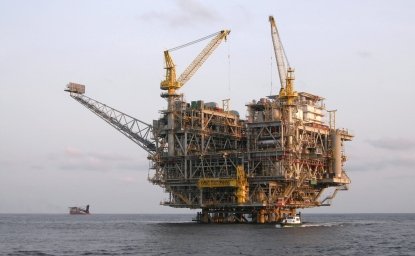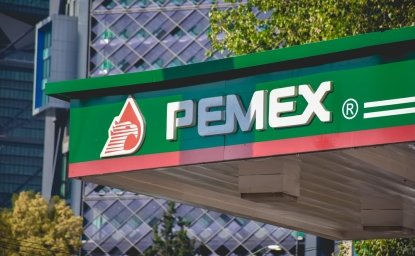Chapter 8 Update: Russia and Eurasia
A New Landscape with New Pressures
Oil Prices Plunge
In our previous version of this book chapter, we framed our discussion around the dramatic oil and gas market changes faced by Russia and the countries of Eurasia since 2008, when the oil price spiked to $145 a barrel in July only to plunge to $39 a barrel the following February. The price rose steadily after February 2009 allowing the region’s oil and gas export-reliant economies to breathe a collective sigh of relief, but we cautioned that their dependence on high oil prices would create future vulnerabilities.
We didn’t have to wait long. These vulnerabilities were jarringly exposed in the second half of 2015. Oil prices have plunged more than 50 percent since June 2014, even flirting in August 2015 with the $39 a barrel level that was previously touched in 2009. Low oil prices have taken their toll on all regional economies and are disrupting progress on a number of planned oil and gas projects.
Currency Devaluations
The oil price plunge spurred the dramatic slide of the Russian ruble, starting in October 2014, and by the following January, this had forced a currency devaluation in Turkmenistan. Kazakhstan adopted a freely floating currency against the US dollar on August 20, 2015 after the pressures on its economy had built to an unsustainable level, made worse by devaluation of the Chinese yuan on August 11.
Chinese Economic Slowdown
In fact, the slowdown in the Chinese economy has had ripple effects throughout the region. China has been both a source of funds for upstream and pipeline developments and a market for regional oil and gas exports. China may become more selective about lending in the region, while its demand for imports could diminish.
Russia Sanctions and Current Output
In response to Russian annexation of Crimea and the conflict in eastern Ukraine, the US and EU in 2014 and 2015 have imposed numerous layers of sanctions on Russian companies, officials and business people that impact on their ability to access western capital and equipment and technology and limit Russia’s ability to attract foreign partners.[1] The sanctions are designed to constrain Russia’s future oil resource development from the offshore deepwater, Arctic offshore, and onshore shale formations. Current development, however, continues to yield record high oil output as ruble-denominated production costs have dropped.
Costly Investments for Future Production
Russia and the Eurasian countries are weighing decisions on when or whether to move forward with costly investments in new, complex oil and gas projects and export infrastructure, which are meant to ensure the future security of their supplies. Some of these complex projects are running behind schedule.
Ukraine, confronted with Russian gas pipeline bypasses that will increase its supply vulnerabilities, tried between 2013 and 2015 to open its own offshore and onshore resources to foreign investment, but those efforts were rendered unsuccessful partly by questions about prospectivity and partly because of the ongoing conflict.[2]
This chapter update will address several areas where the new realities are taking the greatest toll in Russia and Eurasia. It will also highlight the continued energy and geopolitical importance of this region – despite a lower perceived priority resulting from the current abundance of global oil and gas supplies.
Russia Faces Barriers to New LNG Projects and Gas Pipelines
LNG Projects
Sanctions threaten Russian plans for assuming a more significant role in the Liquefied Natural Gas (LNG) business through two potential new LNG projects, Yamal LNG and a third train at Sakhalin Energy. Yamal LNG is led by private Russian company Novatek.[3] Sakhalin Energy is led by Gazprom.[4]
Yamal LNG, which is constructing a $27 billion 3-train liquefaction and export plant on the Yamal Peninsula in the Russian Arctic, expects the first 5.5 million tonne per year train to be operational by the end of 2017. However, the project could be delayed because US sanctions have made it difficult to access western capital,[5] and it is seeking to raise project finance from Russian and Chinese sources, with China’s capital and market critical for Yamal LNG’s success.
By 2021, Sakhalin Energy was planning to add a third 5 million tonne per year LNG train to its existing 9.6 million tonne per year facility. US sanctions impacting the deepwater offshore South Kirinsky oil and gas field, which was seen as a gas supply source for the third train, mean that another gas supply source may have to be found, potentially pushing back the project’s timeline.[6]
With LNG projects facing financial and other pressures, Gazprom decided to focus on new pipeline projects.
Pipeline Projects
Gazprom is building the Power of Siberia (PoS) pipeline to feed gas from fields in East Siberia to northeast China, to begin delivery between 2019 and 2021.[7] The projected cost of the upstream field developments and the PoS is about $55 billion. But the estimated $350 per thousand cubic meters (mcm) gas price in the agreement signed in May 2014 with Chinese state company CNPC has since dropped, raising questions about the project’s economics.
Gazprom also continues to plan for new pipelines to Europe that bypass Ukraine. These include the Turkish Stream pipeline and a third and fourth branch of the Nord Stream pipeline. By 2020, Russia plans to shift the gas it sends across Ukraine through these new pipeline networks – prompting growing Western concern about circumventing that country.
One of these networks would be the 63 bcm per year Turkish Stream project agreed by Gazprom and BOTAS in December 2014.[8] A substitute for the previous, longer South Stream project, Turkish Stream has faced delays with the Intergovernmental Agreement (IGA) that would encompass details of the project, including the gas price for supplies to Turkey.[9]
In case Turkish Stream encounters further problems, Gazprom has proposed two new branches (Nord Stream-2) to mirror and augment the existing two branches of the 55 bcm per year Nord Stream pipeline (Nord Stream-1) which runs from Russia under the Baltic Sea to Germany.[10] Shell, OMV (Austria), Germany’s E.ON and BASF/Wintershall, and France’s Engie (formerly GDF Suez) have joined Gazprom in a shareholders’ agreement for Nord Steam-2,[11] but it will also need an IGA with Germany and many EU regulatory approvals for new onshore pipelines to receive and ship this gas.
Economics and Sanctions Stop Progress on Russian Arctic Oil Projects
In April 2012, the Russian government embarked on a campaign to bring in foreign investment and technology for developing its Arctic oil and gas resources.
But two years later, the more adverse oil and gas price environment combined with the Ukraine conflict and sanctions to dash the exuberance which had greeted the Russian Arctic opening.
On September 12, 2014, the US and the EU imposed sanctions on exporting goods, services, and technology for exploration or production of Russian deepwater, Arctic offshore oil, and shale oil.[12] The sanctions immediately impacted the most advanced Arctic JV, ExxonMobil’s Kara Sea Arctic project, where drilling had found initial indications of oil. By the end of September 2014, ExxonMobil withdrew from its Arctic drilling project.[13]
Eurasian Countries Grapple with Low Oil Prices and Project Delays
Kazakhstan Relies on Its Western Partners
Kazakhstan’s flagship oil producer, the TengizChevroil (TCO) joint venture,[14] is undertaking a detailed engineering study for its Future Growth Project (FGP) to raise production at the Tengiz field to an estimated 770,000 b/d by 2021 from an expected 580,000 b/d in 2015. With an estimated $34 billion cost, a Final Investment Decision (FID) for the FGP is expected in 2016.
Expansion of TCO’s sister project, the Caspian Pipeline Consortium (CPC) export pipeline[15] from Tengiz to the Russian Black Sea port of Novorossiysk appears to be on track to doubling CPC’s capacity to1.4 mmb/d but its completion timing may be adjusted to the longer time span for expected higher fill from Tengiz and new oil from Kashagan.
Kazakhstan’s onshore Karachaganak gas and condensate field,[16] one of the biggest in Eurasia, has postponed an expansion decision until 2017. Complicating Karachaganak’s future is Shell’s acquisition of one of the field’s operators, BG, which has a 29.25% stake. Kazakhstan’s government is mulling whether to pre-empt the Shell entry in order to increase its 10% stake in Karachaganak.
The giant offshore Kashagan oil field[17] is finally planned for start-up in late 2016 or in 2017, after repeated delays since 2005. Kashagan shareholders are replacing leaking pipelines from an artificial island offshore to the onshore treatment plant, paying for this new infrastructure from their own pockets without reimbursement under their PSA agreement.[18] But as long as oil prices remain depressed, Kashagan will struggle to make money.
Turkmenistan Struggles to Diversify Gas Exports Without Western Companies
In Turkmenistan, international oil companies (IOCs) from the United States and Europe tried unsuccessfully to obtain access to the giant onshore Galkynysh gas field, with a link to South Asian markets through the planned Turkmenistan-Afghanistan-Pakistan-India (TAPI) gas pipeline. In 2015, after failing to secure agreements for participation in phase three of Galkynysh, Chevron and ExxonMobil withdrew from the country. Germany’s DEA (formerly RWE Dea AG) has followed suit after experiencing insurmountable bureaucratic hurdles in Caspian offshore block 23.[19]
Subsequently, Turkmen state company Turkmengaz was appointed to head the TAPI consortium.[20] TAPI’s future, however, is further clouded by the anticipated removal of sanctions from Iran in 2016. Pakistan and India could revive planned gas pipelines from Iran – potentially much more viable than TAPI.
Azerbaijan Looks West to Europe and East to Turkmenistan as It Builds the Southern Corridor
In principle agreeing to set aside territorial disputes, Turkmenistan and Azerbaijan continue discussions about constructing a Trans-Caspian Gas Pipeline (TCGP) to carry Turkmen gas in its neighbor’s Western-oriented gas export network. However, Ashgabat remains relatively unmotivated, and Baku is focused on constructing first the 16 bcm per year Trans-Anatolian Pipeline (TANAP) across Turkey and expanding its capacity to 23 bcm per year in 2023 and 31 bcm per year in 2026.[21] TANAP’s 16 bcm per year first phase will carry only Azerbaijani gas from the second phase of the offshore Shah Deniz gas and condensate field (SD-2).[22]
There is one project, Turkmenistan’s offshore Block 1, which could be well positioned to eventually supply Turkmen gas through Azerbaijan. Notably, Malaysia’s Petronas – the Turkmen government’s partner in Block 1 – entered the Shah Deniz project and its associated export pipeline assets in April 2015, after it acquired Statoil’s shares.[23] Petronas produces oil and gas in Turkmenistan’s Block 1, which is just across from the Shah Deniz field.
The Broader Context
The current abundance of global oil and gas supplies has tended to put on the back burner US energy concerns with Russia and the Eurasian countries. Hence, despite project delays and perhaps even cancellations over time, there isn’t the same level of priority that there was even two years ago.
However, future supply interruptions in the Middle East or elsewhere underline the continued importance of energy sources in Russia and Eurasia. Equally important is the need for longer-term commitment required by geopolitical realities – above and beyond energy. The region sits between Russia, China, and Iran. It has limited capacity to independently withstand the pressures of its neighbors and an increased Islamic extremist threat from Afghanistan and the Middle East.
An increasingly assertive Russia will seek a larger role in the post-Soviet space. China is expanding its economic and energy presence. And as Iran returns to the international community as a political, economic and oil and gas player, Eurasia will need continued engagement with the United States so it does not get lost in the power balance games among its neighbors.
Julia Nanay is Principal of Energy Ventures LLC, and has served as managing director at PFC Energy where she headed the Russia and Caspian Service, and as senior director at IHS Energy.
Jan Kalicki is Public Policy Fellow and Energy Lead at the Woodrow Wilson Center and is also chairman of Eurasia Foundation. He served previously as counselor for international strategy at Chevron, and previously as Counselor to the US Department of Commerce and White House NIS Ombudsman in the Clinton Administration.
[1] The March 16, 2014 referendum on the Russian annexation of Crimea led to the imposition of an increasing number of US and EU sanctions. The first US sanctions were levied on March 17, 2014, and have continued to be broadened with additional US and EU sanctions throughout 2014 and 2015.
[2] Julia Nanay, “Gas Landscape in the Black Sea Transformed: Ukraine’s Role Challenged by Russia,” Euxeinos 18 / 2015, Energy and Integration in the Black Sea Region, June 2015. Jan Kalicki, “Peace and Energy in Ukraine…and Russia,” Kennan Cable No. 6, Kennan Institute, Washington, DC, March 2015. In the final months of his administration, former Ukrainian President Viktor Yanukovych signed two offshore production sharing agreements (PSAs) with major international oil companies. Both of these were derailed by the March 2014 annexation of Crimea. In January 2013, Shell signed a 50-year PSA for the Yuzivska block in the eastern Ukrainian Dnieper-Donets Basin, where work was halted in 2015 by the fighting in Ukraine’s East. Chevron in December 2014 withdrew from its 50-year Oleska shale gas PSA in western Ukraine’s North Carpathian Basin, which was signed in November 2013.
[3] Yamal LNG’s shareholders are Novatek 60%, Total 20%, and CNPC 20%. On September 3, 2015, during President Vladimir Putin’s Beijing visit, Novatek signed a framework agreement to sell China’s Silk Road Fund a 9.9% stake in Yamal LNG.
[4] Sakhalin Energy Investment Company, Ltd. (also known as Sakahlin-2) shareholders are Gazprom 50%, Shell 27.5%, Mitsui 12.5%, and Mitsubishi 10%.
[5] On March 20, 2014, US sanctions were imposed on Gennady Timchenko,, who owns 23.5% of Novatek. On July 15, 2014, the US imposed sanctions on Novatek itself, limiting the company’s access to US capital markets.
[6] On August 7, 2014, the US Commerce Department published a final sanctions ruling in the Federal Register -- for the first time targeting a specific field, South Kirinsky, which is in deepwater offshore Sakhalin Island. South Kirinsky’s gas is needed to feed a third LNG train at Sakhalin-2, but because it contains substantial oil reserves, it was added to the US sanctions list.
[7] During President Vladimir Putin’s May 21-22, 2014 participation in the Conference on Interaction and Confidence-Building Measures in Asia (CICA) in Shanghai, Gazprom agreed with China National Petroleum Corp. (CNPC) to deliver 38 billion cubic meters (Bcm) per year of gas over 30 years to northeast China through the Power of Siberia Pipeline (PoS). The main source for this gas will be Gazprom’s giant Chayandinskoye (Chayanda) gas and condensate field in the Sakha Republic (Yakutia).
[8] Julia Nanay, op.cit.
[9] http://sputniknews.com/europe/20150904/1026582858.html
[10] Nord Stream-1 shareholders are: Gazprom 51%, BASF/Wintershall 15.5%, E.ON 15.5%, Gasunie 9%, and GDF Suez 9%. GDF Suez has been re-named Engie. Nord Stream-1 is an underwater pipeline with two branches that runs for 1,224 kilometers (760-miles) from Vyborg, Russia to Griefswald, Germany, bypassing Belarus, Poland and Ukraine. Nord Stream’s first branch with capacity of 27.5 bcm per year was commissioned on November 8, 2011. On October 8, 2012, Gazprom opened the second 27.5 bcm per year branch, bringing the network to full potential capacity of 55 bcm per year.
[11] http://www.platts.com/latest-news/natural-gas/moscow/gazprom-agrees-nord-stream-2-asset-swaps-with-26200667
[12] http://www.treasury.gov/press-center/press-releases/Pages/jl2629.aspx
[13] http://oilprice.com/Energy/Crude-Oil/Western-Sanctions-Halt-Exxons-Drilling-In-Russian-Arctic.html
[14] TCO shareholders are Chevron 50%, ExxonMobil 25%, KazMunaiGaz (KMG) 20%, and Lukoil 5%.
[15] CPC shareholders are Transneft with 31% on behalf of the Russian government, KMG with 20.75% on behalf of the Kazakh government, Chevron 15%, Lukoil 12.5%, ExxonMobil 7.5%, Shell 5.5%, Rosneft 3.825%, Eni 2%, and BG 2%.
[16] Karachaganak Petroleum Operating (KPO) PSA shareholders are BG 29.25%, Eni 29.25%, Chevron 18%, Lukoil 13.5%, and KMG 10%. Shell’s acquisition of BG, announced in April 2015, will result in BG’s departure from KPO. http://www.dealreporter.com/info/2015/05/28/bgshell-may-see-lengthy-kazakhstan-scrutiny-due-karachaganak-pre-emption-rights/
[17] Kashagan shareholders in the North Caspian Operating Company (NCOC) PSA are KMG/Samruk- Kazyna with the majority of 16.88%, then each with 16.81% are Eni, ExxonMobil, KMG, Shell, and Total, plus CNPC with 8.33%, and Inpex 7.56%. In July 2015, Kazakhstan’s National Wealth Fund Samruk- Kazyna took 50% of KMG’s Kashagan stake off the national oil company’s hands, paying $4.7 billion, which was done to alleviate KMG’s $17.9 billion debt.
[18] http://en.tengrinews.kz/markets/Kazakhstan-still-planning-to-resume-production-at-Kashagan-262052/
[19] Eurasianet, “German Energy Company Pulls the Plug on Turkmenistan Operations,” October 28, 2015.
[20] http://www.azernews.az/region/86506.html
[21] TANAP’s partnership structure may change but its current make-up is Azerbaijan’s state oil company SOCAR 58%, Turkey’s state pipeline company BOTAS 20%, and BP 12%. In August 2015, SOCAR announced plans to sell 7% of its 58% stake to its Turkish subsidiary, SOCAR Turkey. http://en.trend.az/business/energy/2428052.html. TANAP would be expandable to 31 bcm/y by 2026 and eventually 60 bcm/y.
[22] Shah Deniz partners are: BP, operator 28.8%, Turkey’s state upstream company TPAO 19%, SOCAR 16.7%, Malaysia’s Petronas 15.5%, Iran’s NICO 10%, and Lukoil 10%. Petronas acquired its Shah Deniz share when Statoil completed its sale of its assets in Azerbaijan in April 2015. Petronas also acquired Statoil’s 12.4% stake in the Azerbaijan Gas Supply Company (AGSC).
[23] http://www.statoil.com/en/NewsAndMedia/News/2015/Pages/30Apr_ShahDeniz.aspx. Shah Deniz is tied to the Baku-Tbilisi (Georgia)-Erzurum (Turkey) export pipeline. BTE’s partners include all the members of the Shah Deniz gas and condensate field, except Iran’s NICO.
Authors

Former Counselor for International Strategy, Chevron; Chairman, Eurasia Foundation
Explore More
Browse Insights & Analysis
Energy and Security: Strategies for a World in Transition

La esencia de la infraestructura global: perspectivas del líder de la industria Matt Harris

